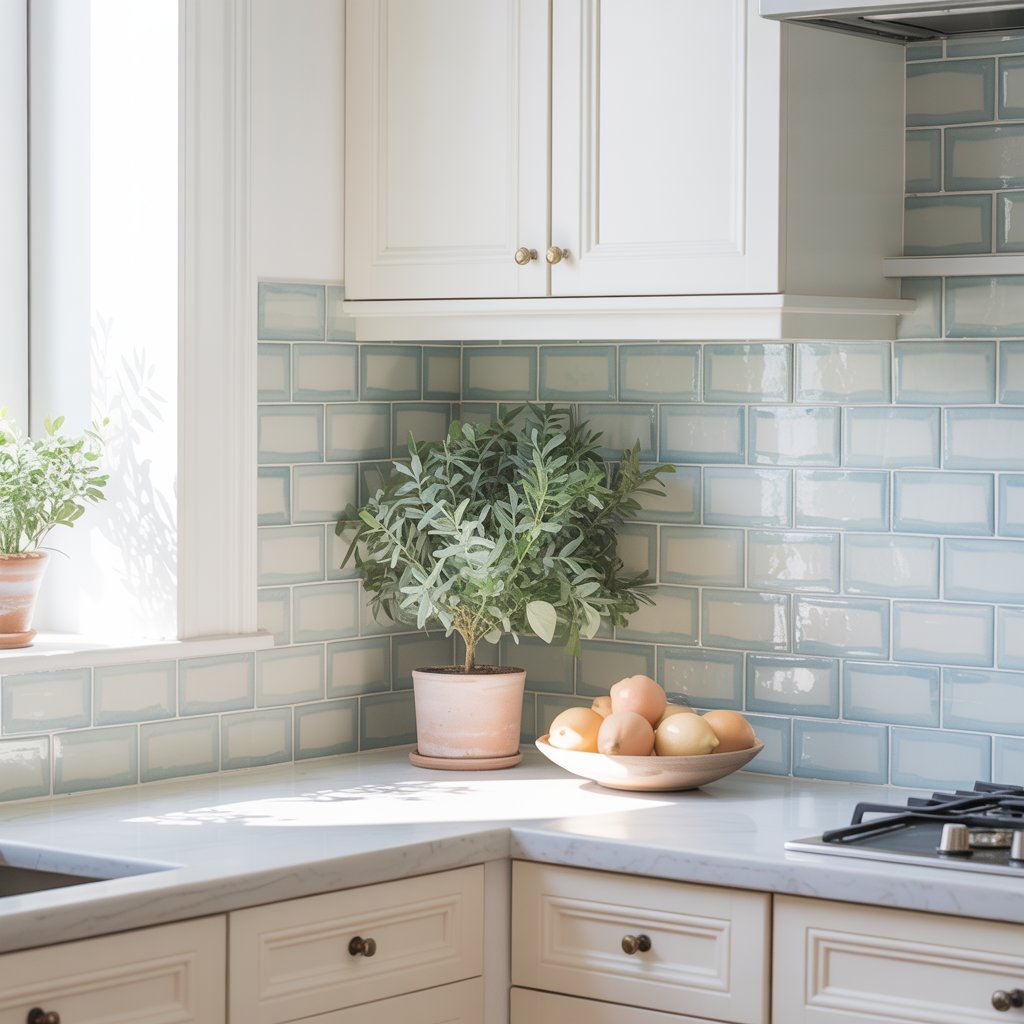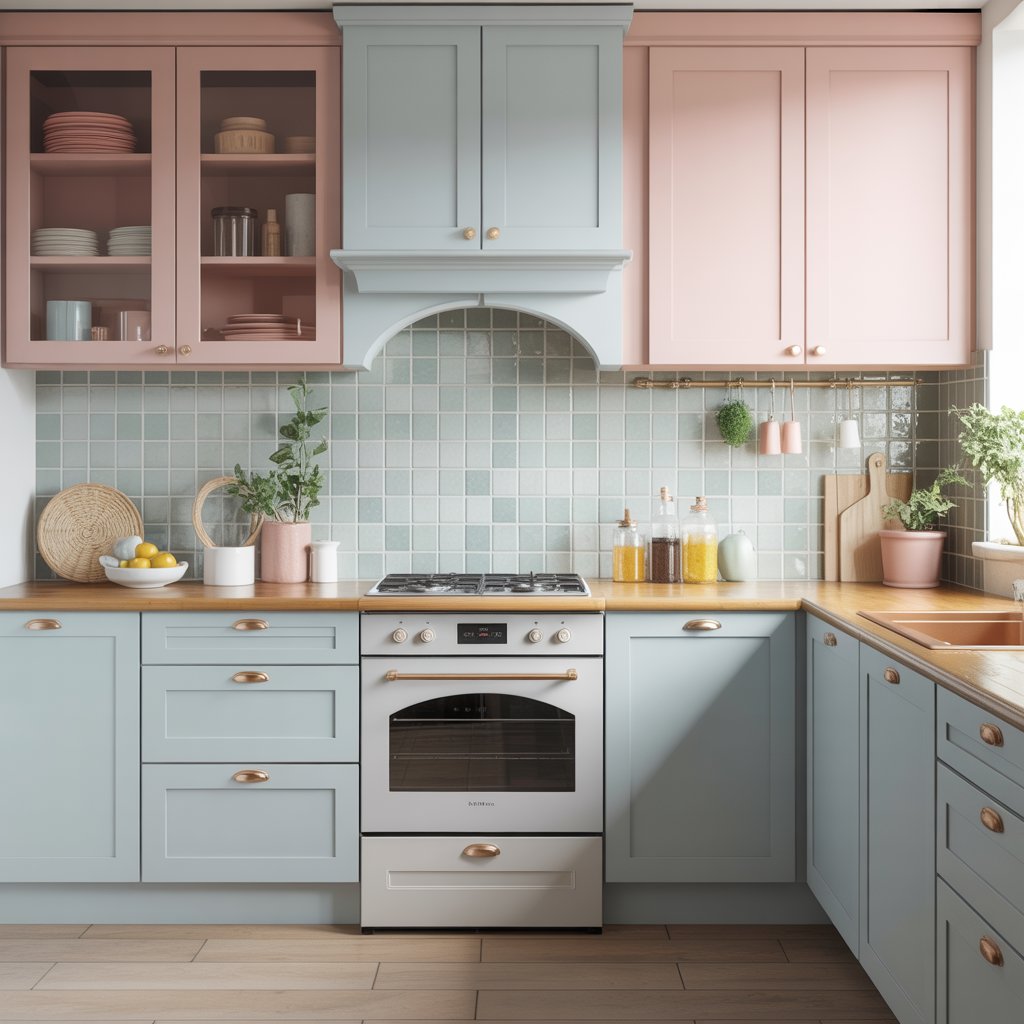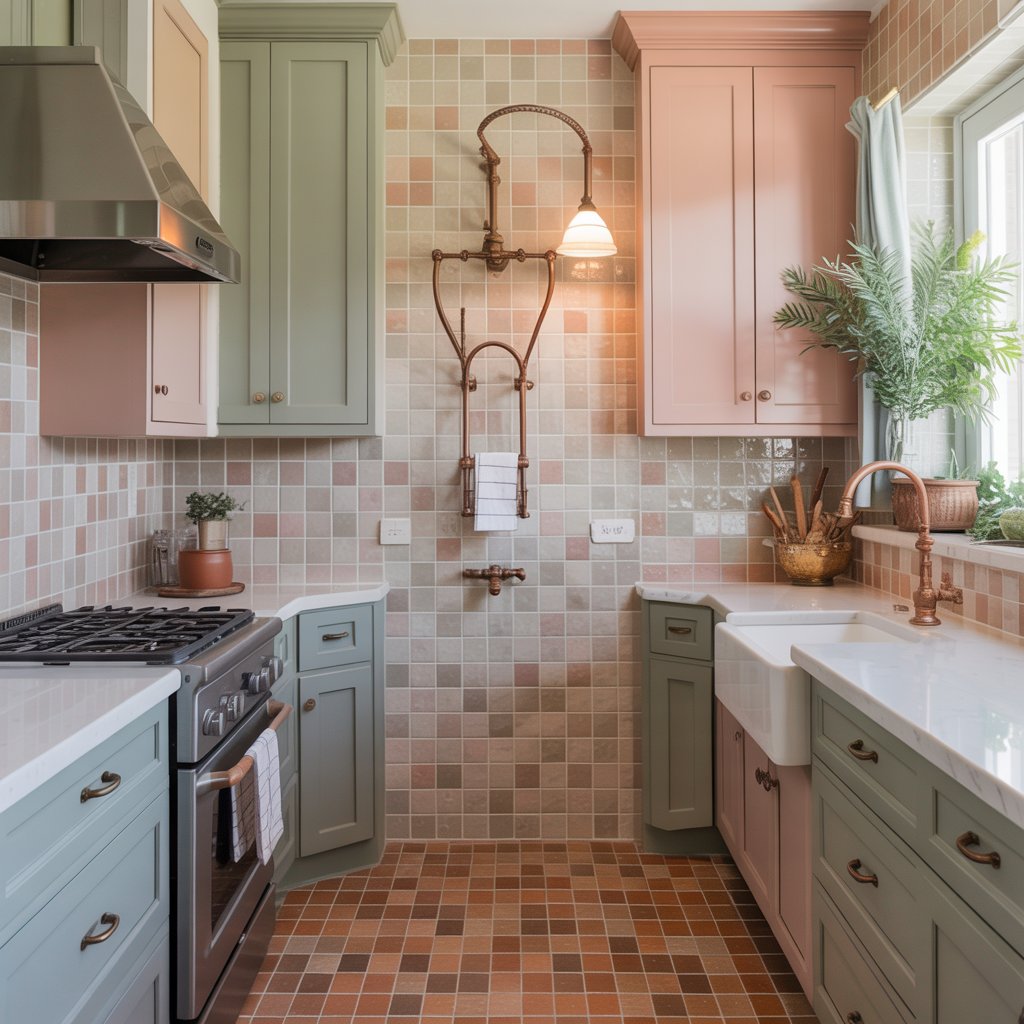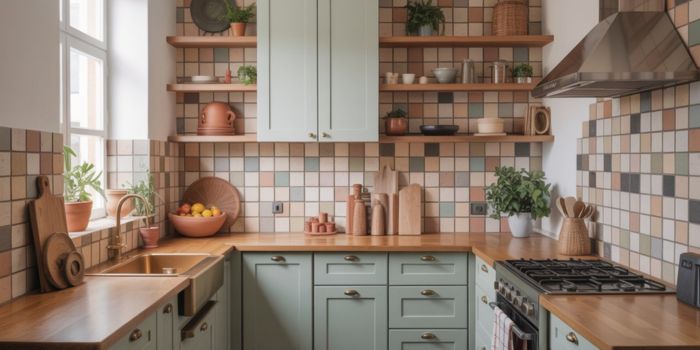When you’re working with a small kitchen, tile color isn’t just a detail it’s a game changer. It shapes how the space feels: open or cramped, cozy or cold.
The right tile shade can bounce light, stretch walls, and make your kitchen feel twice its size or wrap it in a warm, inviting hug. Neutrals whisper elegance, while bolds spark personality.
Patterns? Use them wisely they’re visual magic. Inspired by seasoned designers and tile gurus, we’ve pulled together a guide to help you choose colors that not only fit but transform your compact culinary corner. Because in small kitchens, every shade tells a story.
1. Why Tile Color Matters in Small Kitchens

Small kitchens, by nature, wrestle with tight quarters and scarce natural light factors that can leave them feeling boxed-in and dim. Yet, within this spatial puzzle, tiles emerge as silent game-changers.
Opt for light-reflective hues think soft creams, cool whites, or pale greys to visually expand the space and bounce available light around. Avoid dark tones or chaotic patterns that visually clutter and compress.
The key lies in cohesion: tile color must weave effortlessly into the surrounding elements cabinets, countertops, hardware creating harmony rather than contrast. A seamless, tonal palette doesn’t just brighten a room; it reshapes how open and inviting it feels.
2. Best Tile Colors for Small Kitchens
1. Light and Neutral Colors: The Go-To Choice for Spaciousness

Light colors such as whites, creams, soft beiges, and pale grays are the most popular and effective tile colors for small kitchens. These shades reflect natural and artificial light, making the space feel brighter and more open. For example, glossy off-white subway tiles on the walls or backsplash can create a clean, airy atmosphere that visually expands the room .
- White and Off-White Tiles: Timeless and versatile, white tiles brighten the space and pair well with almost any cabinet color. Matte or glossy finishes both work, but glossy tiles reflect more light, adding to the sense of openness .
- Soft Gray Tiles: Light gray tiles offer a modern, subtle alternative to white. They add sophistication without darkening the space and can be paired with darker grout for depth without overwhelming the senses.
- Cream and Beige Tiles: These warm neutrals add a cozy yet spacious feel, especially when combined with warm-toned cabinetry or natural wood accents.
Using the same or similar tile color on both walls and floors can create a seamless flow, making the kitchen appear larger.
2. Pastel and Soft Colors: Adding Personality Without Shrinking Space

Soft pastel shades like light blue, sage green, blush pink, or pale mint can add a gentle pop of color while maintaining brightness. These hues bring personality and freshness to small kitchens without overpowering the space.
- Light Blue and Blue-Grey Tiles: These cool tones evoke calmness and airiness, perfect for small kitchens aiming for a coastal or serene vibe. Pairing these with white cabinetry enhances the light and open feel.
- Sage Green and Soft Green Tiles: Earthy yet soft greens add a natural touch and work well with wood or white finishes. They brighten the kitchen while keeping it grounded and warm25.
- Blush and Soft Pink Tiles: These add warmth and a subtle feminine touch without making the space feel smaller, especially when used as backsplash accents.
3. Bold Colors and Accent Tiles: Use Sparingly for Impact

While light colors dominate small kitchen tile choices, bold colors like deep blues, emerald greens, or charcoal blacks can be used strategically to add depth and interest without shrinking the room.
- Deep Blue or Navy Tiles: These can create a striking backsplash or island accent, especially when balanced with white or light cabinetry. Dark tiles add dimension but should be limited to avoid overwhelming the space.
- Emerald Green Tiles: Rich green tiles bring elegance and a touch of nature indoors. They work well in small kitchens with good lighting and warm wood tones to balance the depth.
- Black and White Patterns: Classic black and white hexagon or patterned tiles on the floor can add visual intrigue and make the space feel stylish and larger if the pattern is not too busy.
Using bold tiles in small doses, such as a backsplash or a feature wall, allows you to express personality without sacrificing the openness of the kitchen.
4.Tile Size and Layout Influence Color Impact

The size and layout of tiles also affect how colors work in small kitchens:
- Large Format Tiles: Big tiles with minimal grout lines in light colors create fewer visual breaks, making the floor or walls appear more expansive.
- Diagonal or Herringbone Patterns: Laying tiles diagonally or in herringbone patterns can make the kitchen feel wider or longer, enhancing the effect of light-colored tiles.
- Matching Wall and Floor Tiles: Using the same tile color and style for walls and floors creates a continuous look that visually enlarges the space.
5. Combining Tile Colors with Kitchen Elements

To maximize the effect of your tile color choice:
- Coordinate tile colors with cabinet finishes—light tiles with white or pastel cabinets for brightness, or warm neutrals with wooden cabinetry for coziness .
- Use grout colors close to the tile color to maintain a seamless look and avoid visual clutter.
- Add metallic accents like brass or copper fixtures to warm up neutral or pastel tile palettes and add sophistication.
Final Thoughts
For small kitchens, the best tile colors are those that enhance light, create continuity, and complement your kitchen’s overall style.
Light neutrals and soft pastels are the safest bets for making the space feel larger and brighter, while bold colors can be used thoughtfully to add character.
Large tiles, clever layouts, and matching grout colors further amplify the sense of space. Whether you want your small kitchen to feel airy and modern or warm and inviting, the right tile color choice will transform your kitchen into a beautiful, functional haven.
Frequently Asked Questions (FAQs)
1. What tile colors make a small kitchen look bigger?
Light-colored tiles, such as white, cream, beige, or light gray, reflect more light and create the illusion of a larger, more open space.
2. Are dark tiles suitable for a small kitchen?
Dark tiles can be used in a small kitchen but should be balanced with lighter elements (e.g., cabinets or walls) to avoid making the space feel cramped.
3. Is white the best color for small kitchen tiles?
White is a popular and effective choice because it reflects light, enhances brightness, and gives a clean, timeless look. However, it may require more frequent cleaning.
4. Can patterned tiles work in a small kitchen?
Yes, subtle patterns or geometric designs in light colors can add personality without overwhelming the space. Avoid large or overly busy patterns that may make the room feel cluttered.
5. Should floor and wall tiles be the same color in a small kitchen?
Using similar colors for walls and floors can create a seamless, continuous look, which helps make the space feel more expansive. However, subtle contrast can also add depth.
6. What about using glossy tiles in a small kitchen?
Glossy or reflective tiles can help bounce light around the room, enhancing the feeling of space. They work well for both walls and backsplashes in small kitchens.
7. Do neutral tones work well in small kitchens?
Yes, soft neutrals like taupe, light gray, or soft greige can provide a warm and inviting feel while maintaining the open, airy effect.
8. Can I use colored tiles in a small kitchen?
Absolutely. Soft pastels or muted tones like mint green, pale blue, or blush pink can add charm without closing in the space. Use sparingly as accents or backsplashes for best results.
9. Is it okay to mix tile colors in a small kitchen?
Yes, but keep it minimal. A two-tone color palette (like white and gray or beige and soft green) can add interest while keeping the space cohesive.
10. What tile color hides dirt the best in a small kitchen?
Mid-tones like warm gray, taupe, or speckled patterns tend to hide dirt better than solid light or dark tiles, making them practical choices for kitchen floors.
